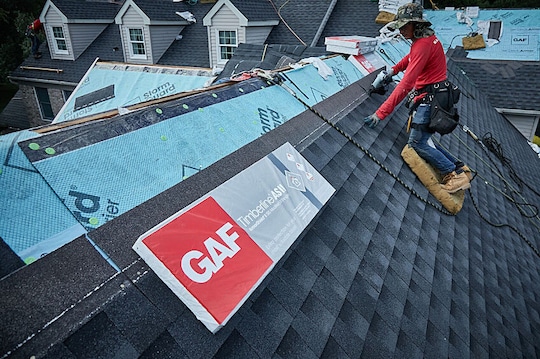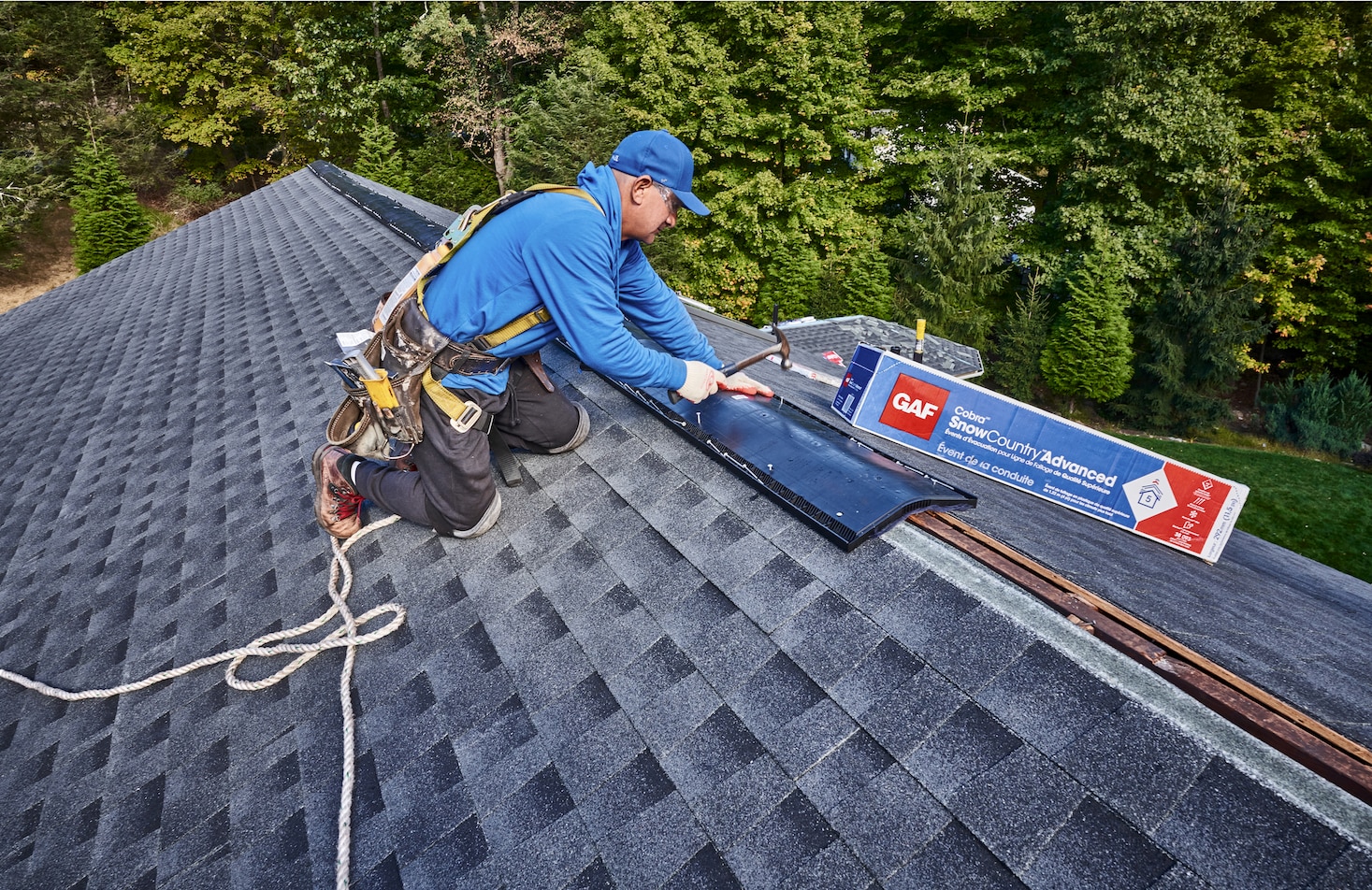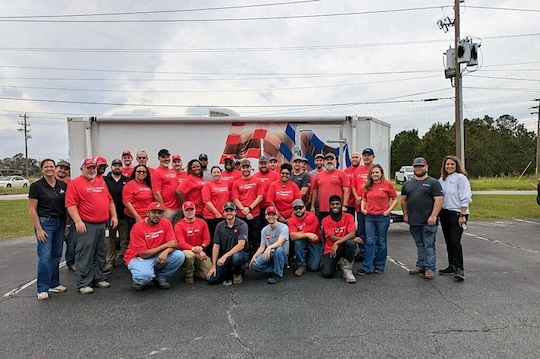
Lors de la fabrication d'un nouveau produit de toiture, il est important de s’assurer de sa conformité aux codes de toitures locaux et aux exigences de plusieurs juridictions. Ces normes sont souvent similaires dans toutes les régions, mais certaines peuvent exiger des essais complémentaires ou l'utilisation de matières premières particulières. The product development team at GAF works hard to ensure products meet some of the strictest codes, so they can provide years of protection no matter where they're installed.
Jeremiah Hershberger, GAF product manager of residential accessories, recently discussed the role codes and standards play in residential roofing product development, specifically concerning roof vent code requirements.
Why Are Product Codes and Standards Important?
The main purpose of building codes and standards is to maintain public health, safety, and welfare in all structures. They do this by ensuring that buildings are constructed in such a way as to minimize potential hazards, like fire, structural failure, or storm damage.
Building codes exist to improve the safety and livability of buildings. Ils fixent des exigences minimales pour les matériaux et les systèmes installés, ainsi que pour leurs méthodes d’installation. In the US, building codes are upheld and enforced by state, county, and city governments through the permitting and inspection processes.
Standards also provide minimum design and performance metrics for products and systems. Toutefois, contrairement aux codes de construction locaux, ils sont souvent respectés à l’échelle universelle (nationale ou internationale). Les organismes tels qu’ASTM International et la National Fire Protection Association sont chargés de la création, de la mise à jour et de la communication de ces normes. Local building codes often use these standards to set minimums for product and installation quality.
How Do Roofing Codes and Standards Affect Product Development?
"The goal of product development at GAF is to provide enhanced value for our customers and contractors," Hershberger explains. Au final, les clients ont besoin d’être rassurés par la performance des produits de GAF, et les codes et normes de construction déterminent un seuil minimum pour la performance des produits. Accordingly, they must be taken into consideration when designing products.
Codes are prescriptive performance requirements for buildings. Ils englobent les matériaux utilisés pour la construction et leur installation. All products used in a particular building must meet the local code requirements for that county or city.
Standards are used as bases of comparison. Types of standards include:
- Testing standards that define methods and minimum acceptable results
- Rating standards that provide a way to fairly compare products
- Design standards that set the criteria for specific roof system designs
When products are developed for use in many geographic areas, they must meet several locations' requirements. For instance, when developing a new off-ridge ventilation product, GAF considers not only how much net free area (NFA) the unit will have, but also the performance characteristics required to meet Florida Building Code, Texas Department of Insurance (TDI), and Miami-Dade standards so the product can be used in areas that adhere to those codes.
Why Does GAF Pay Attention to Codes and Requirements?
"We want our customers to be confident in the performance of our products not based solely on our word but also on the basis of third-party standards that level set the industry," notes Hershberger. "Codes and testing requirements provide customers with that outside assurance that our products will hold up to the environmental rigors of a specific region or location."
For example, TAS-100(A) tests a product's performance in wind-driven rain. The test provides information on how well a ventilation product will perform in such an environment and helps the product development team learn how likely it is that a ventilation product might leak, so we can then mitigate that risk.
How Do Codes Affect Product Quality?
Codes may specify what raw materials can be used to make a product or how it will perform in certain standardized tests. Par exemple, les exigences de résistance au feu des toitures ASTM E108 ou ANSI/UL790 de classe A requièrent un degré de protection élevé contre le feu pour le platelage, ce qui affecte directement les matériaux utilisés pour fabriquer ces produits. Similarly, the UL 2218 Class 4 impact test or the ASTM E330 Uplift Pressure Test show how a product performs under naturally occurring forces (e.g., hail or wind)
"GAF strives to find the balance between performance, strength, and ease of installation (or handleability)," Hershberger says. "This often leads us to develop products that use higher grade materials (better performance over time), are simpler to manufacture with fewer points of potential failure, and are easier to install correctly (ensuring repeatability)."
How Codes Affect the Development of High-Quality Roof Vents
Creating high-quality roof vents and rooftop accessories didn't occur by accident. The GAF development team focuses on roofing codes and requirements through an intentional design process to drive innovation. From product ideation to design, development, and launch, the team ensures products meet or exceed several codes and standards, including:
Code du bâtiment de la Floride
Sets minimum performance standards for roof construction, such as wind resistance, fire performance, and roof ventilation requirements. Products must be approved by the state before being installed.
Miami-Dade County
This county in Florida has some of the strictest building codes in the country due to its classification as a High-Velocity Hurricane Zone. Products used there must also be approved by the county as meeting not only Florida Building Code, but the stricter county requirements.
Texas Department of Insurance (TDI)
Regulates insurance companies and the insurance/claims process in the state of Texas. Roofing products are evaluated based on TDI-adopted building specifications regarding products used and installation methods.
Other tests performed to ensure product performance include:
- TAS-100(A). Determines the water infiltration resistance of a ridge area ventilation system (ridge vents, static vents, turbines, or powered vents).
- Simulated snow/ice dam. Ice dams can form when a roof is not properly ventilated, leading to snow melting and refreezing along the lower edge of the roof.
- UL2218 Class 4 impact test. L’essai UL2218 est un essai de chute d’un boulet d’acier qui évalue la résistance aux chocs des revêtements de toiture. Class 4 products are shown to withstand the 20-ft drop of a 2-inch diameter steel ball without cracking through significant damage.
Ensuring Roofing Products Are Up to the Task
The product team at GAF routinely performs these tests to ensure roofing materials meet local roofing code requirements. The company then makes the results publicly available, helping customers nationwide rest assured that they can rely on GAF roofing products to perform as expected.
For more information on the GAF ventilation products that meet or exceed code requirements, explore the ridge and off-ridge ventilation offerings.



